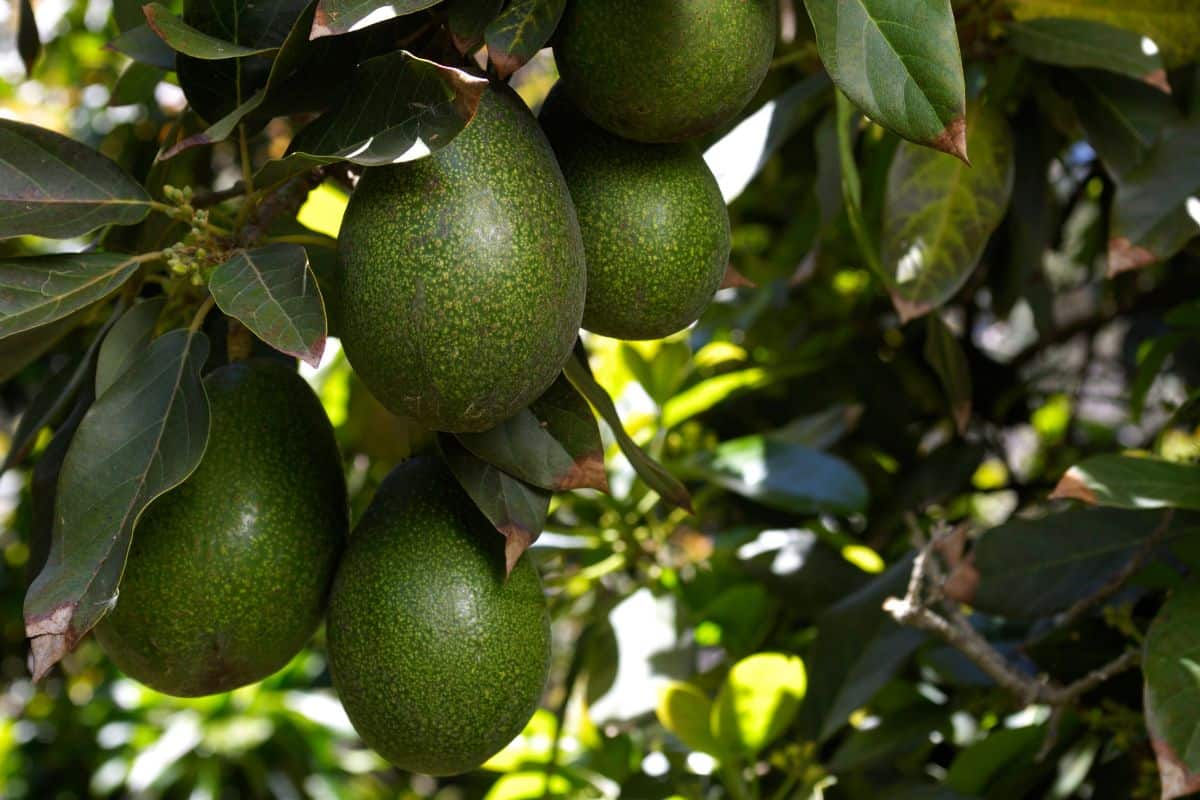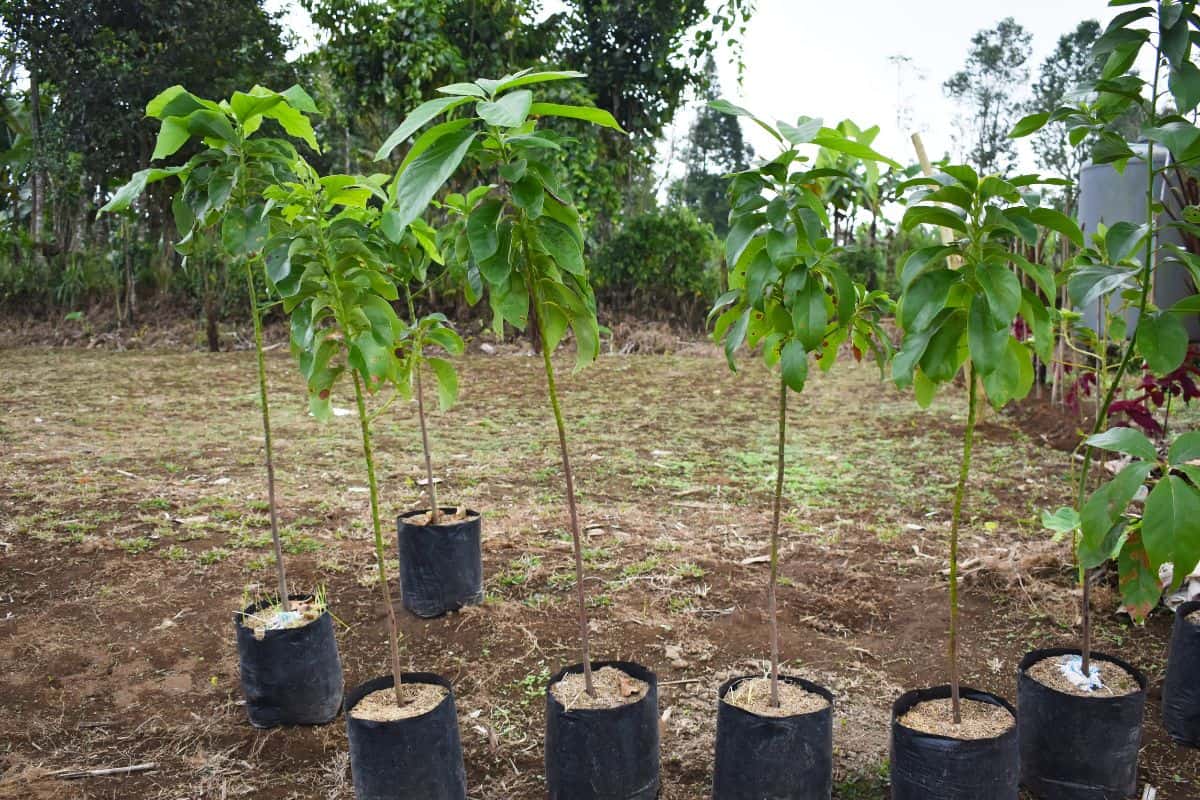Figuring out the best maintenance schedule for your plants can sometimes be confusing. Do you have an avocado tree or bush you're working with and have no idea when/if you need to prune? Will removing dead leaves from your avocado-growing plant harm it?
We answer these questions and many more throughout this article. Let's discuss.
Since dead leaves and branches no longer play an essential role for your avocado tree/plant, there's no reason to keep them around.
Generally, you want to remove any dead sections from an avocado plant or tree, regardless of size. As the foliage on a plant dies, it no longer contributes to that plant's health: so it's fine to go.
As we begin, we will cover all things avocado plants/trees and discuss when you should prune them. We're here to assist if you're new to growing avocados or think it's time for a major clean-up. With that said, let's dive head first into this topic below!

Should You Prune An Avocado Plant?

Yes, pruning is usually a good habit to form when it comes to an avocado tree or plant. As we mentioned, the dead leaves and branches on an avocado plant don't serve a purpose.
Therefore, it's best to get rid of them using gardening shears or sharp scissors.
Of course, you don't have to go crazy with the trimming, as avocado plants tend to shed their foliage accordingly. However, if you see anything that looks brown or wilted, you're more than welcome to remove it.
For those dealing with an avocado tree, you'll want to cut a few of the larger top branches back, so the lower areas can get proper sun exposure.
This isn't necessary for smaller shrubs, so size also plays a role in this.
In addition, it might be worth saving your major pruning for 1-2 times each year so you don't stun your avocado tree/plant.
When Is The Best Time To Prune An Avocado Plant/Tree?
For those wanting to prune their avocado tree or shrub, try and wait until the spring. Typically, major trimming towards springtime will ensure your avocado plant can replenish itself before the fall and winter.
You also want to wait until the weather is decent. For example, we don't recommend trimming an avocado plant before a cold spell or rain storm.
Instead, wait until the weather is warm and the skies are clear.
According to California Avocado Growers, pruning your avocado plant/tree between January and May will result in a "shoot-flush" during your plant's fruit development, which can mean better avocados.
Again, you don't need to remove much more than dead or dying sections from your plant, so keep that in mind when the time comes.
How Do You Prune An Avocado Tree?

Since avocado trees and plants need foliage to produce fruit, you don't want to remove too much while pruning. So, it's best to inspect your tree for any dead or unattractive foliage, grab a pair of shears, and gently remove them.
If your tree requires major reshaping, you will need to take off a bit more. Regardless, you don't usually need to shave down the branches of an avocado plant/tree more than a few inches.
Specifically, you want to target your tree's tip and uppermost leaves. Doing this yearly can promote new growth on an avocado tree or plant, so it's worth trying.
In addition, if you need to prune your avocado tree/plant more often, this is okay, as long as you aren't taking away too much foliage.
How Far Back Can You Cut An Avocado Tree?
For those wanting to do a more severe pruning, you want to cut back your tree's branches to around two feet. Additionally, you may want to bring your tree down to the stump if the current damage is serious, so this can be different for everyone.
As we said, you don't usually need to do this much trimming. Considering avocado trees depend on lush foliage to produce avocados, you may not see any development after a significant pruning.
It's also worth noting that avocados won't immediately fall off your tree when they're ready. It's common to see the fruit stay on your tree for months, so pruning can disturb the peace.
You should also consider the age of your plant. Is your avocado tree young or mature?
Generally, you won't need heavy pruning for the first year or two when growing an avocado tree, so try to hold off if you can.
Do Avocado Trees/Plants Grow Fast?

Yes! One of the many benefits of growing avocados is that they are fast-growing. Generally, you can see upwards of 30 inches yearly, which can become quite significant over time.
One of the reasons people prune avocado plants and trees harshly is their growth rate. Even experienced growers can have their avocado plants become too big for their space, meaning they need to do some heavy pruning.
Luckily, this won't become an issue for a few years, so there's no need to worry.
Many experts recommend using a stake for younger avocado plants/trees to train them to grow in one vertical direction.
Unless you prefer a shrub, this is the only way you're likely to get your avocado plant growing more like a tree. Again, this isn't much advantage other than the ability to produce more fruit, so it depends on the person.
You can also find pre-grown or trained avocado trees if you don't want to wait for yours to develop, so that may be a better option.
Brighter Blooms - Cold Hardy Avocado Tree
This avocado tree comes 2-3 feet, can grow inside or outdoors, is cold-tolerant, will need watering upon arrival, and comes in a 1-2 foot option.


How Can I Make My Avocado Tree Grow Faster?

If your avocado tree isn't growing as fast as you'd like, there are some things you can try. First, move your tree/plant somewhere with good sun exposure: ideally, full sun.
For those with indoor trees, you want to ensure yours is near a bright, warm window. Regardless of how young or old an avocado tree is, yours will appreciate the extra sunlight.
Next, you can try increasing the humidity near your avocado tree. For example, try misting your tree every few days if it's dry outside or at home.
This extra moisture can make a huge impact and help your tree grow faster.
Furthermore, you should also try to keep the soil around your avocado tree dry. Although you need to occasionally water one, avocado trees don't like to sit in moisture.
If you do all of these things, you should see more growth in your tree!
Should I Fertilize My Avocado Tree/Plant?

Sticking with the theme of growing an avocado tree/plant, fertilizer can quickly become your best friend. According to the experts, you want to fertilize an avocado plant or tree three times in its first year.
Specifically, once in spring, once in summer, and again in the fall. Once your tree/plant becomes a bit larger, you won't need to fertilize more than once annually.
Considering that avocado trees tend to go dormant in the late fall, this is when you want to stop feeding them. Fertilizing before a cold spell or dormancy can send your plant into shock, so be cautious of that.
When it comes to formula, we recommend something nitrogen-based. Larger brands also specifically make products for avocado trees/plants, so you're likely to find something.
Regardless, try only using a slow-release option so your tree/plant doesn't get burned.
Miracle-Gro Shake 'N Feed Citrus, Avocado, Mango Plant Food
This fertilizer works for avocado plants, has added potassium, magnesium, sulfur, and iron, feeds for up to three months, won't burn your plants, and comes in a 4.5-pound bag.


Check out this fertilizer on Amazon here.
Are Avocado Trees/Plants Easy To Grow?
Overall, you should find growing avocado trees and plants very simple. Considering they don't need much more than sunlight, good draining soil, and light pruning, taking care of your plant won't be too challenging.
With that said, your location can greatly impact the success of an avocado tree/plant.
One of the reasons many gardeners don't have luck with their avocado plants is that it gets too cold where they live. If an avocado plant/tree becomes too cold, it won't make any delicious fruit.
Therefore, this isn't always a walk in the park.
If you have moderate winters, you might be able to grow an avocado tree outside year-round, so don't count yourself out yet.
Where Is The Best Place To Plant An Avocado Tree?
Now that you know their cold intolerance finding the perfect spot for your tree is essential. Ideally, you want to grow an avocado tree/plant in USDA zones ten through 12 in a bright sunny location.
This species prefers sub-humid climates and does best with fast-draining soil.
According to HappySprout, you should also only grow avocado trees in places with Mediterranean temperatures, so that's another factor to consider.
To Wrap It All Up
![Avocados growing on a tree.. - Should I Cut The Dead Leaves Off My Avocado Tree/Plant? [Inc. When And How To]](https://gardentabs.com/wp-content/uploads/2022/08/Avocados-growing-on-a-tree..-Should-I-Cut-The-Dead-Leaves-Off-My-Avocado-TreePlant-Inc.-When-And-How-1.png)
Whether you have an avocado tree/plant or want to grow one, it's always good to know their routine. From what we found, you can (and should) trim the dead leaves off your tree whenever you see them.
One thing about these plants is that they depend on their foliage to produce avocados, so try not to get too wild with your trimming.
Again, you can also cut back an avocado tree or plant more severely, although we don't think this is generally a great idea.
Made it to the end? Check out these helpful related gardening posts below!
What Is The Difference Between Pollination And Fertilization?
